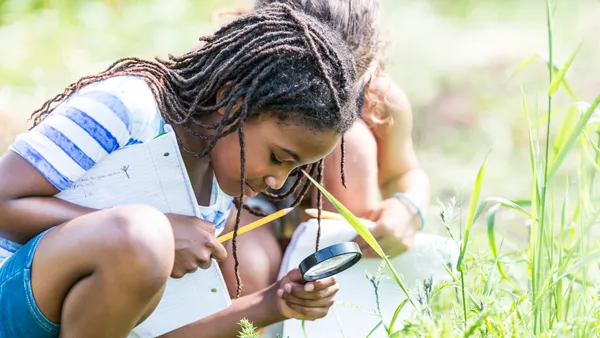Dive Brief:
- Language arts teacher Emma Tackett writes for Edutopia that allowing her students to "taste" different genres of books in periodic “book tasting” sessions helps them choose the books best suited for them for independent reading in the classroom and beyond.
- After the book options are chosen, the instructor holds 45-minute reading workshops which include a 10-minute mini lesson on a literary skill, followed by 30 minutes of independent reading of students' chosen books and five minutes of discussion on the aspect of literature discussed in the mini-lesson.
- The instructor prepares students for testing and makes sure they are on task by conferencing with them periodically and listening to the classroom discussion, using this information to have students work in one of three small group types (guided reading, strategy groups and book clubs) based on their understanding and skill level.
Dive Insight:
At first glance, the idea of a “book tasting” seems like a lightweight approach to languages arts instruction that does not provide the same depth of experience as the shared reading of a whole book does. However, as a strategy for providing student engagement with literature and a way to differentiate instruction, this novel approach has a lot to offer.
The approach seems to be gaining traction among language arts teachers and media specialists, with some hosting book tasting parties and others posting videos of student reactions to certain books they sampled. There are other resources available, as well, including a podcast on the topic and a sample book tasting worksheet readily available.
While both the shared reading of a whole book and the book tasting option both have something to offer, they are vastly different strategies. It may be a good idea for language arts teachers to offer both approaches during the course of a year in order to get the full benefit of both methods. Any strategy that cultivates a love of reading in students is beneficial in the long run.










